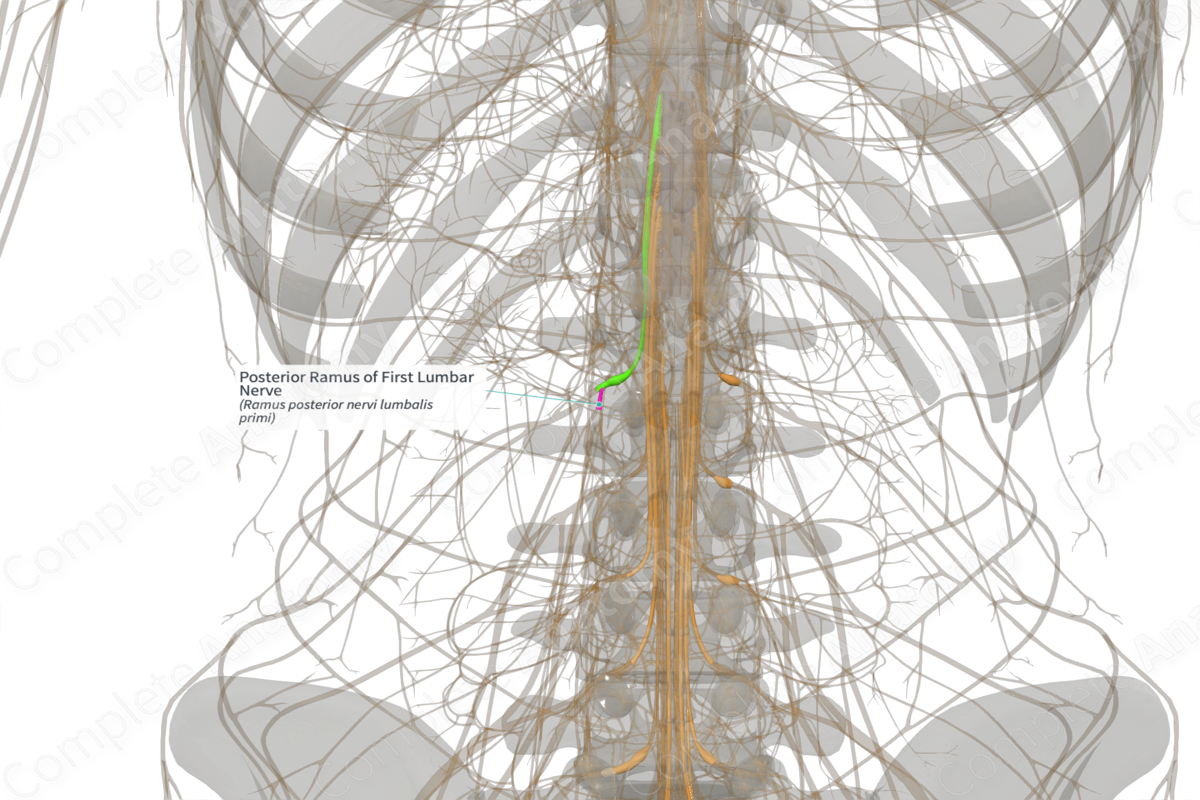
Posterior Ramus of First Lumbar Nerve (Right)
Ramus posterior nervi lumbalis primi
Read moreQuick Facts
Origin: First lumbar nerve.
Course: Passes through the intertransverse ligament, between the transverse processes of L1 and L2 vertebrae.
Branches: A large lateral and a small medial branch.
Supply: The lateral branch supplies motor innervation to the longissimus and iliocostalis lumborum and sensory innervation to the gluteal skin. The medial branch supplies motor innervation to the multifidus and interspinalis muscles and sensory articular branches innervate the facets of the superior and inferior articular processes.
Related parts of the anatomy
Origin
The posterior ramus of first lumbar nerve (L1) emerges as one of two branches. The other is the anterior ramus of the same first lumbar nerve.
Course
After branching out from the first lumbar nerve, the posterior ramus passes through an aperture in the intertransverse ligament, just below the transverse process of L1 vertebra. The posterior ramus supplies the overlying medial intertransverse muscle between L1 and L2 vertebrae, before dividing into lateral and medial branches.
Branches
The posterior ramus of the first lumbar nerve divides into lateral and medial branches.
Supplied Structures & Function
The lateral branch of the posterior ramus of first lumbar nerve supplies motor innervation to the longissimus and iliocostalis lumborum components of the lumbar erector spinae and sensory innervation to the gluteal skin (superior cluneal nerves)
The medial branch supplies motor innervation to the multifidus and interspinalis muscles, while sensory articular branches supply the facets of the superior and inferior articular processes.



